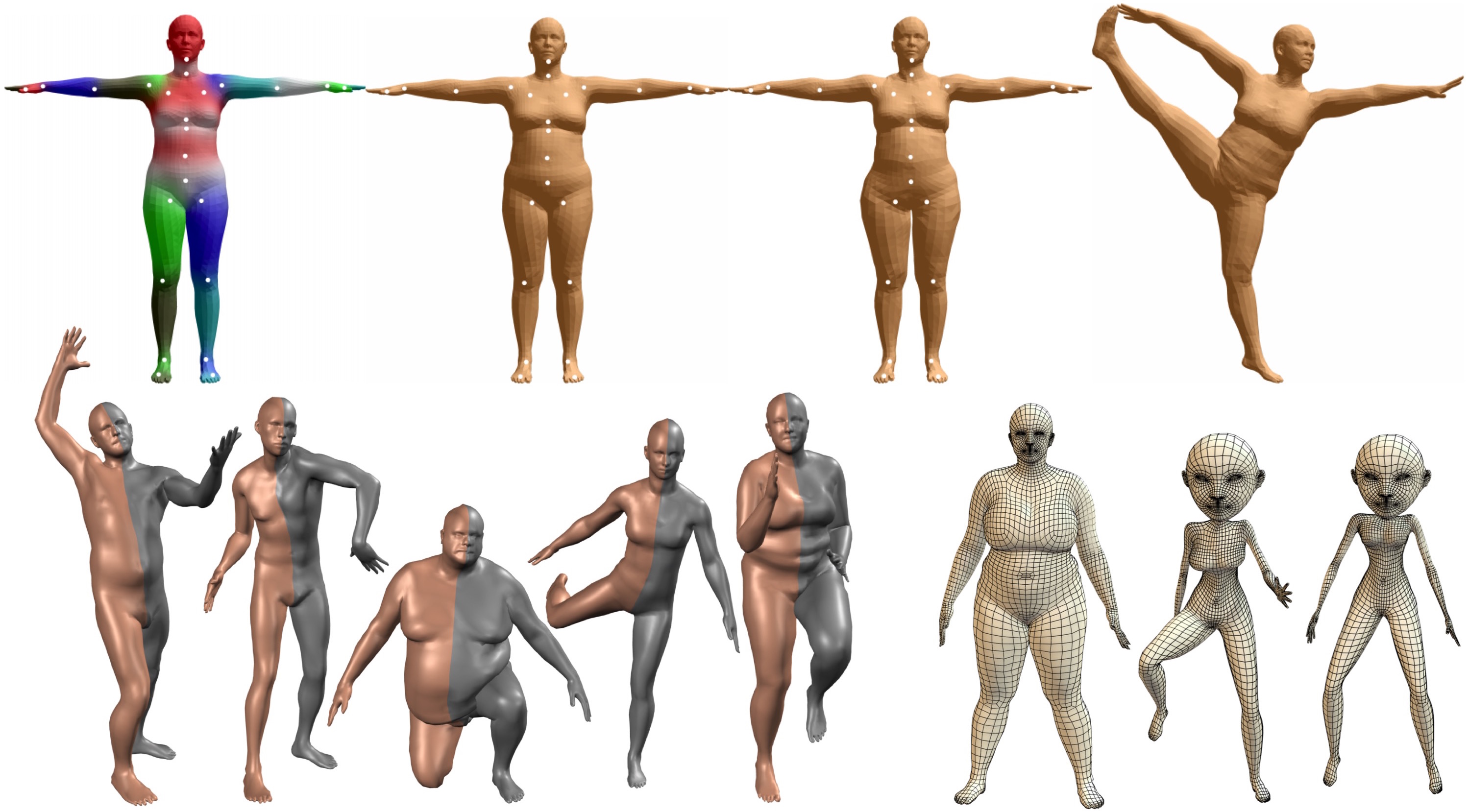
Top: The SMPL body model uses a template shape, blend weights, a function to predict joint locations from shape, shape blend shapes to change identity, pose blend shapes to correct for pose deformations, and dynamic blend shapes to capture soft-tissue dynamics. All these are learned from data and fit scan data more accurately than SCAPE (bottom left: scans in gray, SMPL in copper). (bottom right) We can retarget pose and soft-tissue dynamics to new characters.
The human body is certainly central to our lives and is commonly depicted in images and video. We are developing the world's most realistic models of the body by learning their shape and how they move from data. Our goal is to make 3D models of the body look and move in ways that make them indistinguishable from real humans. Such virtual humans can be used in special effects and will play an important role in emerging virtual reality systems. They can also be used in computer vision to generate training data for learning methods or can be fit directly to sensor data. What makes this hard is that the human body is highly articulated, deforms with kinematic changes, and exhibits large shape variability across subjects.
Over the last five years we have developed a series of 3D body models that can be used for both graphics and vision: BlendSCAPE [ ], Delta [ ], Dyna [ ] and finally SMPL [ ]. In particular, SMPL is a realistic human body model that is more accurate than previous SCAPE models yet is based on standard blend skinning and blend shapes. Pose blend shapes correct blend-skinning artifacts and are driven by elements of the body part rotation matrices. Shape blend shapes capture how body shape varies across people; these are computed using pose normalized 3D scans of 4000 people. Dynamic blend shapes capture how soft tissue deforms with motion.
The simplicity of our formulation means that SMPL can be trained from large amounts of data. It also means that it is compatible with current game engines and graphics software, running much faster than real time. The model is licensed commercially to Body Labs Inc. and is made freely available for research purposes.
